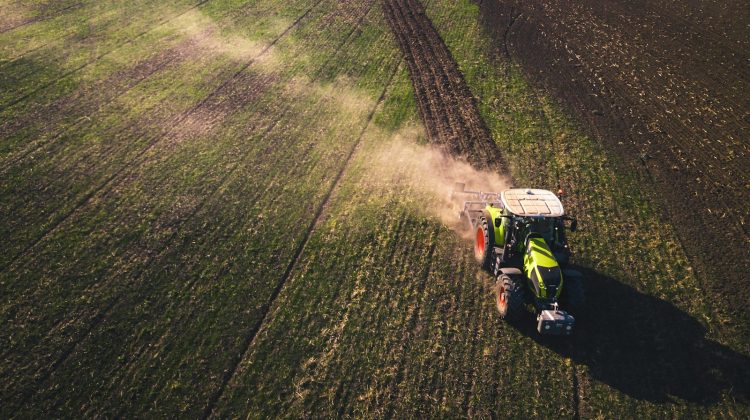
Indian agriculture is experiencing new challenges brought on by climate change. Irregular monsoon patterns, prolonged droughts, and declining soil health have made it harder for farmers to rely on traditional practices. As the climate shifts, farming must become smarter, more efficient, and more sustainable.
Tractors, once seen only as a tool for ploughing or transport, now play a central role in helping farmers adapt to climate-smart techniques. With the right attachments and methods, tractors support better soil health, water conservation, and timely farming, all of which are crucial in a climate-sensitive environment.
What Is Climate-Smart Farming?
Climate-smart agriculture refers to practices that aim to:
- Increase agricultural productivity in a sustainable way
- Help farmers adapt to climate change
- Reduce greenhouse gas emissions wherever possible
This approach does not rely on a single method. Instead, it encourages a combination of land, water, and machinery management techniques that suit local soil types, crop patterns, and weather conditions.
Why Tractors Are Important in This Shift
The tractor remains one of the most important machines on Indian farms. In climate-smart agriculture, its role expands beyond tilling and transport. With proper planning and tools, tractors help farmers reduce waste, use inputs more efficiently, and protect long-term soil fertility.
Some key benefits include:
- Reduced dependence on manual labour
- Faster operations within short weather windows
- Support for low-tillage and precision-farming methods
- Better management of water, fuel, and time
Promoting Sustainable Soil Management
Soil degradation is a major concern in climate-impacted regions. When farmers over-plough or disturb the soil too often, it leads to erosion, nutrient loss, and reduced organic matter.
Modern tractors allow better control over tillage practices. With attachments such as rotavators and cultivators, farmers can prepare soil while disturbing it as little as possible.
Advantages of reduced tillage with tractors:
- Less soil erosion and runoff
- Higher moisture retention
- Improved soil structure and microbial activity
- Lower carbon release from deep soil layers
By switching to conservation tillage or strip tilling, farmers protect soil while still achieving a clean, level seedbed. Tractors help make this possible across large areas in less time.
Efficient Use of Water Resources
Water is becoming scarcer across many Indian regions. To deal with this, farmers must shift from flood irrigation to more controlled systems. Tractors make this transition easier by supporting a variety of irrigation-related attachments.
How tractors improve water efficiency:
- Carrying and installing drip or sprinkler systems
- Laser levelling fields for even water distribution
- Operating pumps and pipe systems quickly across plots
Laser levelling in particular has helped reduce irrigation time and save thousands of litres of water per acre. By creating a smooth field surface, water flows more evenly, reducing both waste and crop damage.
Fuel-Saving Features in Newer Tractors
While tractors rely on diesel, improvements in engine design and operation help reduce fuel use. Smart tractors come with features that allow the farmer to control engine output based on the type of work being done.
Common features for better fuel economy:
- Power control settings to match workload
- Easy-to-monitor service schedules
- Efficient gear systems to reduce engine strain
- Eco-mode operations for light tasks
Using these features properly reduces both fuel cost and environmental impact. Mahindra, as one example, offers tractors designed to support lower emissions without compromising field performance.
Supporting Timely Farm Activities
Unpredictable weather has made it harder to follow fixed farming calendars. Farmers often get shorter windows for sowing or harvesting. Delays during these times can reduce yield or damage crops.
Tractors help manage time better. With the ability to attach different tools, one tractor can handle multiple jobs in a day.
Time-critical operations made easier with tractors:
- Sowing seeds quickly with seed drills
- Harvesting with tractor-mounted combines
- Transporting produce before rain or spoilage
- Managing post-harvest residue with mulchers
These machines allow farmers to react quickly to changing weather conditions and maintain control over the growing cycle.
Enabling Precision in Input Usage
Using fertilisers and pesticides more precisely reduces both cost and environmental risk. Tractors play a role in supporting targeted application methods.
With equipment like boom sprayers and fertiliser spreaders, inputs can be applied evenly and at the correct rate. This improves crop health while preventing runoff into nearby soil or water bodies.
Benefits of precise input management:
- Reduced fertiliser waste
- Lower chances of over-application
- Healthier plant growth and stronger yield
- Less chemical exposure to workers
Farmers who use precision implements report better input-to-yield ratios, especially in crops like wheat, rice, and vegetables.
Protecting Soil Through Mulching and Residue Management
Mulching protects the soil surface from extreme heat, wind, and moisture loss. Tractors help apply mulch evenly across rows, reducing manual effort. They also assist in managing leftover crop residue after harvest.
How tractors help with residue management:
- Shredding and spreading crop waste evenly
- Preventing open burning of stubble
- Improving organic content in the soil
- Preparing fields for the next crop cycle
By keeping the soil covered and fed with organic matter, this practice supports both sustainability and fertility.
Looking Ahead: Smart Farming With Tractors
As farming becomes more data-based, tractors will continue to adapt. GPS-guided tractors and smart attachments are already entering Indian markets. These systems use field maps, soil data, and crop models to adjust planting or fertiliser rates in real time.
Electric and hybrid tractors are also in development. These offer the promise of clean energy farming while reducing noise and maintenance. Evaluate tractor price before you choose one.
For now, farmers can start with small changes. Choosing the proper implements, adjusting tillage depth, or switching to drip irrigation can begin the shift toward a more climate-smart system.
Final Thoughts
The tractor remains one of the farmer’s most trusted tools. In the context of climate change, its role becomes even more vital. With the right approach, tractors support everything from soil protection to water conservation.
They allow timely sowing, reduce waste, and help farmers cope with unpredictable conditions. By embracing new implements and sustainable techniques, farmers can turn these machines into allies of the climate.
Smart farming does not always require large-scale investment. Often, it begins with the right mindset and the right machine. And in that journey, the tractor leads the way.
